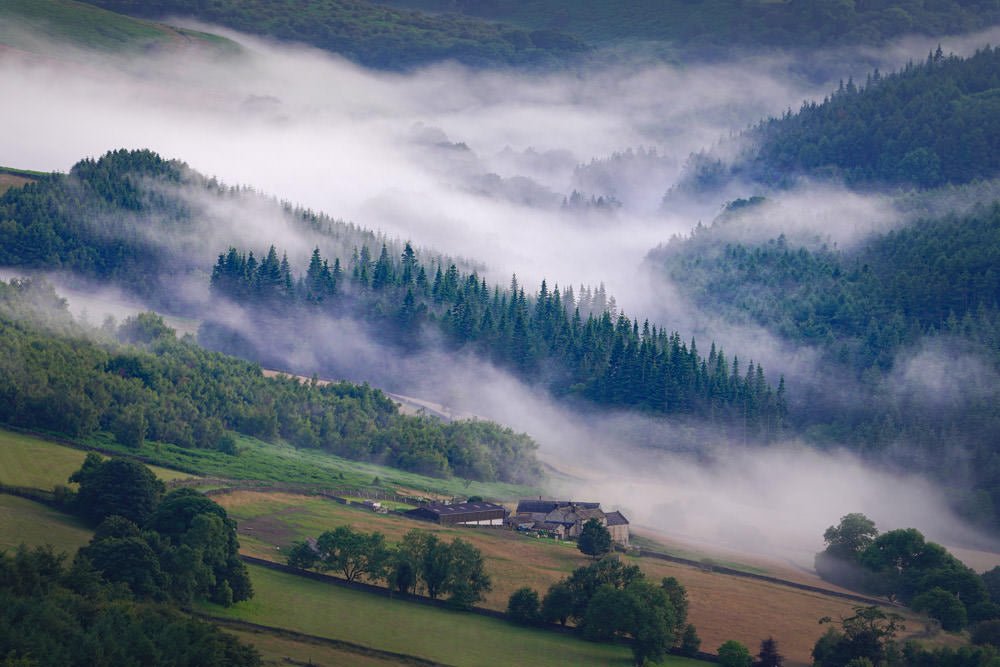National Parks in England are some of the most treasured natural spaces in the United Kingdom. These parks offer stunning landscapes, diverse wildlife, and opportunities for outdoor recreation that draw millions of visitors each year.
From the rugged peaks of the Lake District to the serene beauty of the New Forest, each park has its unique charm and wilderness to explore.
Each national park not only serves as a haven for nature lovers but also plays a crucial role in wildlife conservation and environmental protection.
Visitors can enjoy activities like hiking, cycling, and bird watching while experiencing the rich history and culture embedded in these areas. England's national parks provide a perfect escape for those seeking tranquility and adventure.
As natural environments become increasingly important for sustainability and wellbeing, these parks continue to inspire future generations about the value of nature. Whether one is looking for a peaceful retreat or an exciting outdoor challenge, England's national parks offer something for everyone.
The Importance of National Parks in England
National Parks in England play a crucial role in preserving natural landscapes, supporting biodiversity, and fostering cultural heritage. They also contribute significantly to the economy and public wellbeing, making them vital spaces for both nature and society.
Conservation and Biodiversity
National Parks are key areas for conservation in England. They protect important habitats and wildlife.
About 23% of the land in these parks is designated as Sites of Special Scientific Interest (SSSI). This status helps to safeguard rare plants and animals.
The parks are home to various ecosystems, from wetlands to woodlands. They provide a refuge for wildlife, helping to counteract the effects of climate change.
The presence of diverse species enhances resilience against environmental changes.
Efforts in these parks also focus on restoring ecosystems. This includes managing invasive species and promoting native flora. This restoration work is vital for maintaining biodiversity and the natural beauty of the parks.
Historical and Cultural Significance
National Parks are rich in cultural heritage. Many parks contain ancient monuments and archaeological sites, reflecting the long history of human interaction with nature. They offer insight into England's past, showcasing historical landscapes and traditional practices.
These parks also support local cultures. Communities within or near National Parks often have traditions linked to their environment. Events and activities related to the parks help preserve these cultural identities, ensuring they remain vibrant for future generations.
Arts and literature often draw inspiration from the natural beauty and unique landscapes found in National Parks. They are places where culture and nature intersect, enhancing their significance beyond just environmental value.
Economic and Wellbeing Benefits
National Parks contribute significantly to the economy. They attract millions of visitors each year, generating income through tourism. Local businesses benefit from this influx, helping to support jobs in areas like hospitality and recreation.
These parks also promote health and wellbeing. Access to green spaces has been linked to improved mental health. Spending time in nature helps reduce stress and boosts physical activity levels.
Educational programmes in National Parks foster a connection to nature among younger generations. Volunteering opportunities allow people to engage with their environment, enhancing their appreciation for conservation efforts. The parks, therefore, serve as vital settings for improving both physical and mental health.
Key National Parks in England
England's national parks showcase stunning landscapes, rich wildlife, and activities for all ages. Each park has unique features that attract visitors and nature lovers throughout the year.
Lake District National Park
Lake District National Park is England's largest national park, famous for its breathtaking scenery. It features 16 major lakes, including Windermere, the largest lake in the park, and Lake Coniston.
Scafell Pike, the highest mountain in England, offers challenging hikes. The park is a UNESCO World Heritage site, celebrated for its natural beauty and cultural heritage. Visitors can explore quaint villages like Keswick and enjoy outdoor activities such as walking, sailing, and climbing.
The diverse habitats support numerous species, making it a haven for wildlife enthusiasts.
Peak District National Park
The Peak District National Park stands out for its dramatic landscapes and outdoor activities. It was the first national park in the UK, established in 1951.
The park is known for its extensive walking paths and cycling routes, catering to all skill levels. Visitors can explore Dovedale, famous for its beautiful limestone dales, and Stanage Edge, a favourite spot for climbers.
Wildlife is abundant, with species such as red deer and various birdlife. The park also boasts charming villages like Bakewell, known for its delicious tarts, adding to its appeal.
Northumberland National Park
Northumberland National Park is the northernmost national park in England. It covers 410 square miles of diverse landscapes, including rugged hills and serene forests.
The park is known for its remoteness and tranquility, making it ideal for keen walkers and nature lovers. Visitors can explore Hadrian's Wall, a UNESCO World Heritage site, which showcases Roman history.
Kielder Water, the largest man-made lake in northern Europe, offers activities like fishing and sailing. The park's dark skies are perfect for stargazing, featuring some of the UK's best views of the night sky.
North York Moors National Park
North York Moors National Park is famous for its unique landscapes of moors, forests, and coastlines. It features 1,400 square kilometres of protected areas.
One of its highlights is Whitby, a coastal town known for its history and beautiful seaside views. The park is home to diverse wildlife, including heathland birds.
Walking trails, like the Cleveland Way, provide stunning views of the natural beauty. The park also includes picturesque villages and ruins that offer insight into historical life in the area.
South Downs National Park
South Downs National Park features rolling hills and chalk cliffs along the southern coast of England. It was designated a national park in 2010, making it one of the newest.
The Seven Sisters cliffs are a must-see, offering stunning coastal views. Hiking and cycling are popular, with numerous trails available for all ages.
Visitors can explore charming towns like Arundel and Lewes. The park's landscape supports diverse wildlife and includes ancient woodlands and open heathlands. Its accessibility from cities like London makes it a favourite for day trips.
Activities and Adventures in England's National Parks
England's National Parks provide a wide range of activities and adventures for outdoor enthusiasts. From hiking scenic trails to engaging in exciting water sports, visitors can immerse themselves in nature while enjoying various pursuits. Wildlife watching also adds to the rich experiences within these beautiful landscapes.
Hiking and Walking Trails
The National Parks in England boast an extensive network of hiking and walking trails. The Yorkshire Three Peaks Challenge is a popular endeavour that invites walkers to tackle three peaks in one day: Pen-y-ghent, Whernside, and Ingleborough. This challenge offers stunning views and rewards those who take on the adventure.
Many parks feature accessible paths suitable for families, making it easier for everyone to enjoy nature. The trails vary in difficulty, catering to both beginners and experienced hikers.
Hadrian’s Wall, a UNESCO World Heritage site, offers a fascinating route steeped in history. Along the way, walkers can discover ancient forts and breathtaking scenery.
Climbing and Mountaineering
Climbing and mountaineering are thrilling options within many National Parks. For those seeking a challenge, Scafell Pike in the Lake District is England's highest peak, attracting climbers of all skill levels. The locals recommend hiring a guide for beginners to navigate the terrain safely.
The Peak District also offers excellent rock climbing opportunities. Areas like Stanage Edge cater to climbers with various routes, from easy to very challenging. The stunning gritstone cliffs provide an ideal backdrop for climbers.
Water Sports and Activities
Water activities are popular in several National Parks. The Lake District is particularly known for its stunning lakes, perfect for kayaking and paddleboarding.
Those interested in fishing can find a range of options in tranquil waters. For a unique experience, wind surfing on Coniston Water provides excitement for adventure seekers.
Many parks also feature guided boat tours, offering an effortless way to explore the beautiful landscapes from the water.
Wildlife Watching
Wildlife watching is a highlight of any visit to England's National Parks. Each park is home to diverse species, making them ideal for nature lovers.
The New Forest offers opportunities to see ponies roaming freely, while the Dartmoor area is known for its dramatic landscapes and wildlife.
Birdwatchers can enjoy spotting rare birds in parks like Northumberland, which has designated wildlife reserves. Additionally, guided tours help visitors learn more about the native flora and fauna, enhancing their outdoor experience.
Access to Natural Beauty
National Parks in England provide opportunities for everyone to enjoy the stunning landscapes and natural beauty of the countryside. Access is supported by legislation and initiatives aimed at ensuring that these areas are available for public enjoyment while preserving their scenic values.
Public Rights of Way
Public Rights of Way are essential for exploring National Parks. These paths allow walkers, cyclists, and horse riders to move freely across the countryside.
The National Parks and Access to the Countryside Act 1949 established these rights, ensuring access to green spaces.
Visitors can find extensive networks of footpaths and bridleways. Many parks also provide maps and information to guide visitors along these routes.
It's vital for users to respect farmland and wildlife while enjoying these paths.
Accessibility for All Visitors
Accessibility is a key focus for improving the experience of all visitors in National Parks. Many parks have made significant strides in adapting facilities for those with mobility challenges.
This includes wheelchair-friendly paths, accessible toilets, and parking.
Some parks offer guided tours designed for individuals with different needs. Information points often provide assistance and resources to ensure everyone can enjoy the beauty of nature.
The aim is to create an inclusive environment that welcomes all visitors.
Protecting Scenic Values
Protecting scenic values in National Parks enhances natural beauty while supporting wildlife conservation. Strict guidelines govern how land is used and developed.
The emphasis is placed on maintaining the beauty of the landscape and its ecological health.
Activities such as sustainable tourism and responsible farming practices are encouraged. Educational programs raise awareness about the importance of preserving these areas.
By valuing both access and conservation, National Parks can continue to be enjoyed by future generations.
Connecting with Literature and the Arts
The landscapes of England's National Parks have significantly influenced literature and the arts. Many writers and artists drew inspiration from the stunning scenery, reflecting their emotions and cultural heritage through their works.
Inspirational Landscapes for Writers
National Parks, particularly the Lake District, have served as a muse for notable writers like William Wordsworth. He famously celebrated the area's beauty in his poems. Wordsworth believed that nature was essential for creativity and emotional expression.
Beatrix Potter, another celebrated figure, found inspiration in the various flora and fauna of the Lake District. Her charming stories were filled with delightful characters based on the very landscapes she loved.
Many authors, like Charles Dickens, were influenced by London's parks. Dickens resided near Regent's Park, where he crafted tales that captured the essence of urban life, blending nature with culture.
Visual Arts and National Parks
The scenic beauty of National Parks has been a source of inspiration for artists across generations. The romantic landscapes found in places like the Lake District have been depicted in numerous paintings and illustrations.
Artists often focus on the unique features of the parks, from rolling hills to tranquil lakes. These visuals can evoke deep emotions and feelings tied to the natural world.
Works by artists of the Arts and Crafts movement also reflect the beauty of these locations. They emphasised nature's role in human creativity, showing how the landscapes fostered artistic expression.
In this way, the National Parks not only preserve cultural heritage but also nurture ongoing creative pursuits.
Frequently Asked Questions
National Parks in England offer a range of beautiful landscapes and outdoor activities. Here are some common inquiries about these parks.
Which are the national parks located within England?
England has several national parks. These include the Peak District, the Lake District, Dartmoor, and Exmoor. Other parks are the New Forest, South Downs, North York Moors, and Yorkshire Dales. Each park features unique natural beauty and opportunities for exploration.
What is considered the top national park to visit in England?
The Lake District National Park is often regarded as the top destination. It is famous for its stunning lakes, mountains, and rich literary history. Many visitors enjoy its walking trails and picturesque scenery.
In which English national park can the highest peak be found?
Scafell Pike, the highest peak in England, is located in the Lake District National Park. It stands at 978 metres above sea level, attracting many hikers each year.
What activities are commonly permitted across the national parks in England?
Common activities in England's national parks include hiking, cycling, birdwatching, and camping. Some parks also offer opportunities for climbing and water sports, depending on their landscapes.
Are there any entry fees associated with English national parks?
Most national parks in England do not charge an entry fee. However, certain attractions within the parks or car parks may require payment. It is advisable to check specific areas before visiting.
How do the national parks in England contribute to wildlife conservation?
National parks play a vital role in wildlife conservation by protecting natural habitats. They support a range of species and promote biodiversity. This is achieved through careful management and habitat restoration efforts.
Latest Product Reviews
A Proud Kase UK Partner
The use of high quality glass filters for landscape photography is quite simply game changing and will improve your resulting images. I am happy to talk filters and help you get started, start a conversation here









